The modern library bears little resemblance to its counterpart from just three decades ago. Where rows of reference materials once dominated the landscape, we now find vibrant community spaces that serve as the cornerstone of public engagement and learning. This transformation reflects technological advancement and a fundamental shift in how communities interact with and benefit from their libraries. For administrators and civic leaders planning library projects, understanding this evolution is crucial to creating spaces that will serve their communities effectively for decades.
“The modern library is no longer just a place to house books – it’s a vital community resource that promotes learning, collaboration, and equity through thoughtful design.”
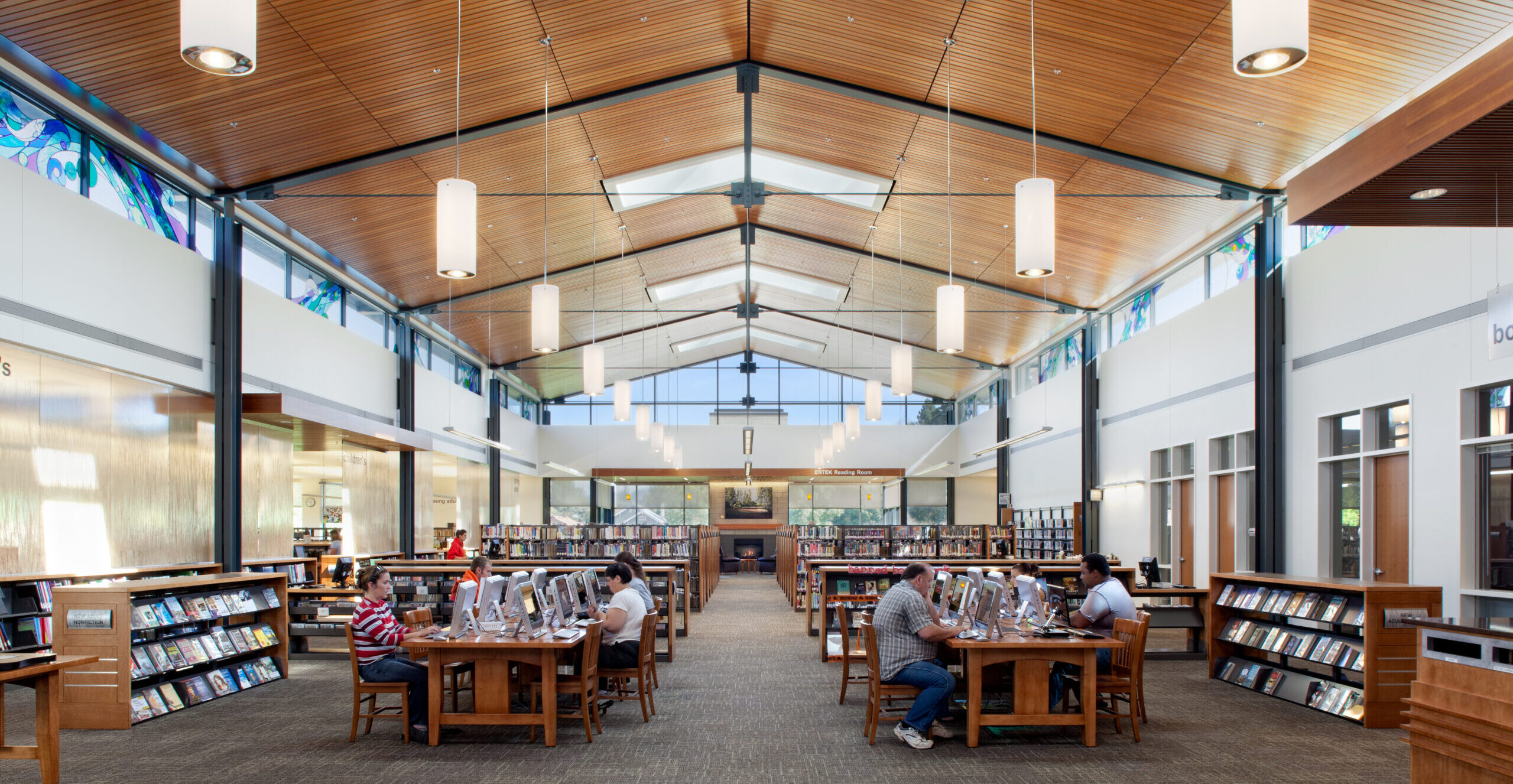
Understanding the Evolution
The 1990s marked the beginning of a pivotal transformation in library design. Traditional libraries, primarily designed for storing and lending physical materials, have evolved into dynamic community centers. This shift isn’t merely aesthetic – it represents a fundamental change in how libraries serve their communities and support equity in the digital age. Modern library design must balance preserving traditional services with integrating new technologies and community needs.
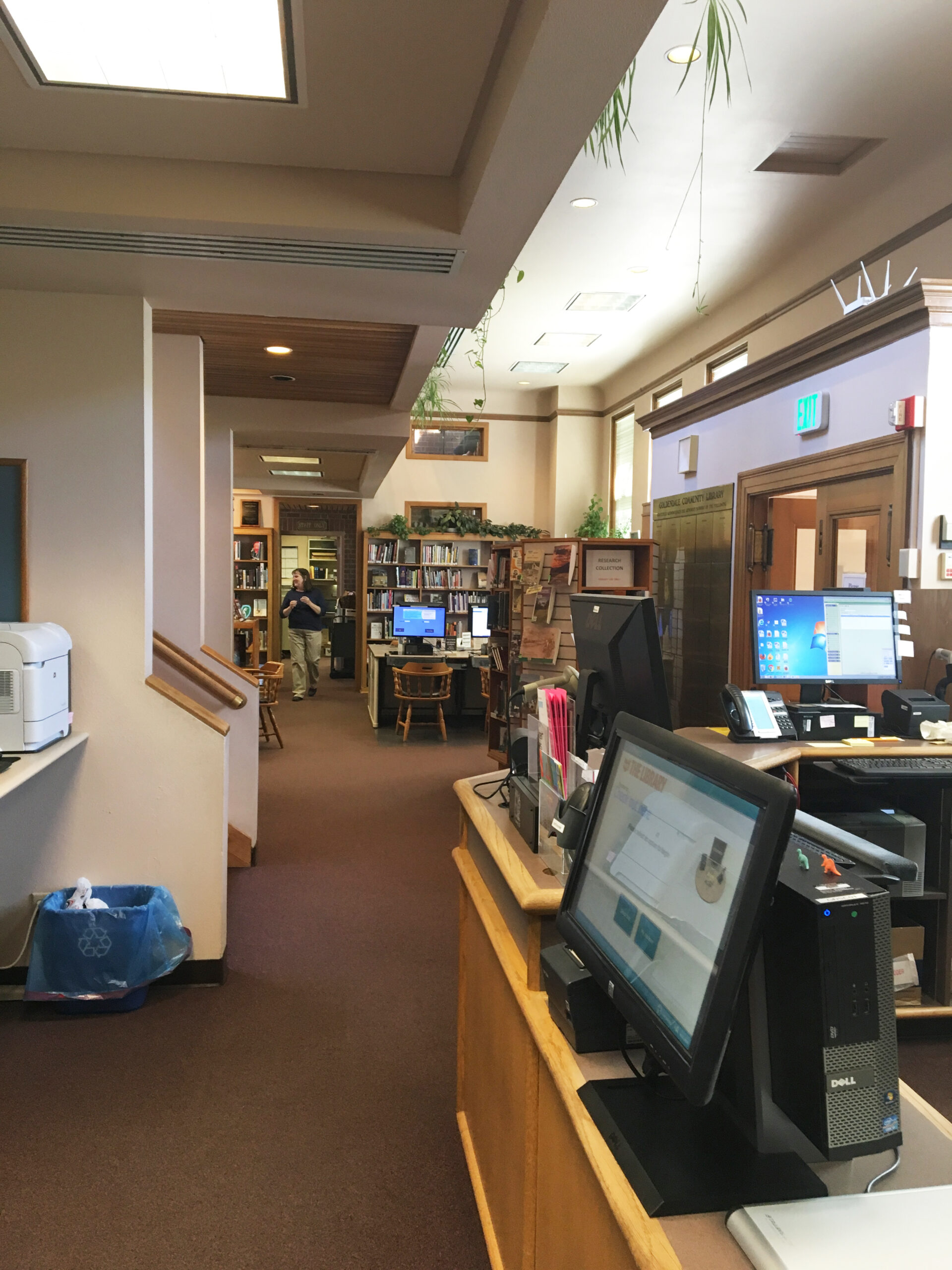
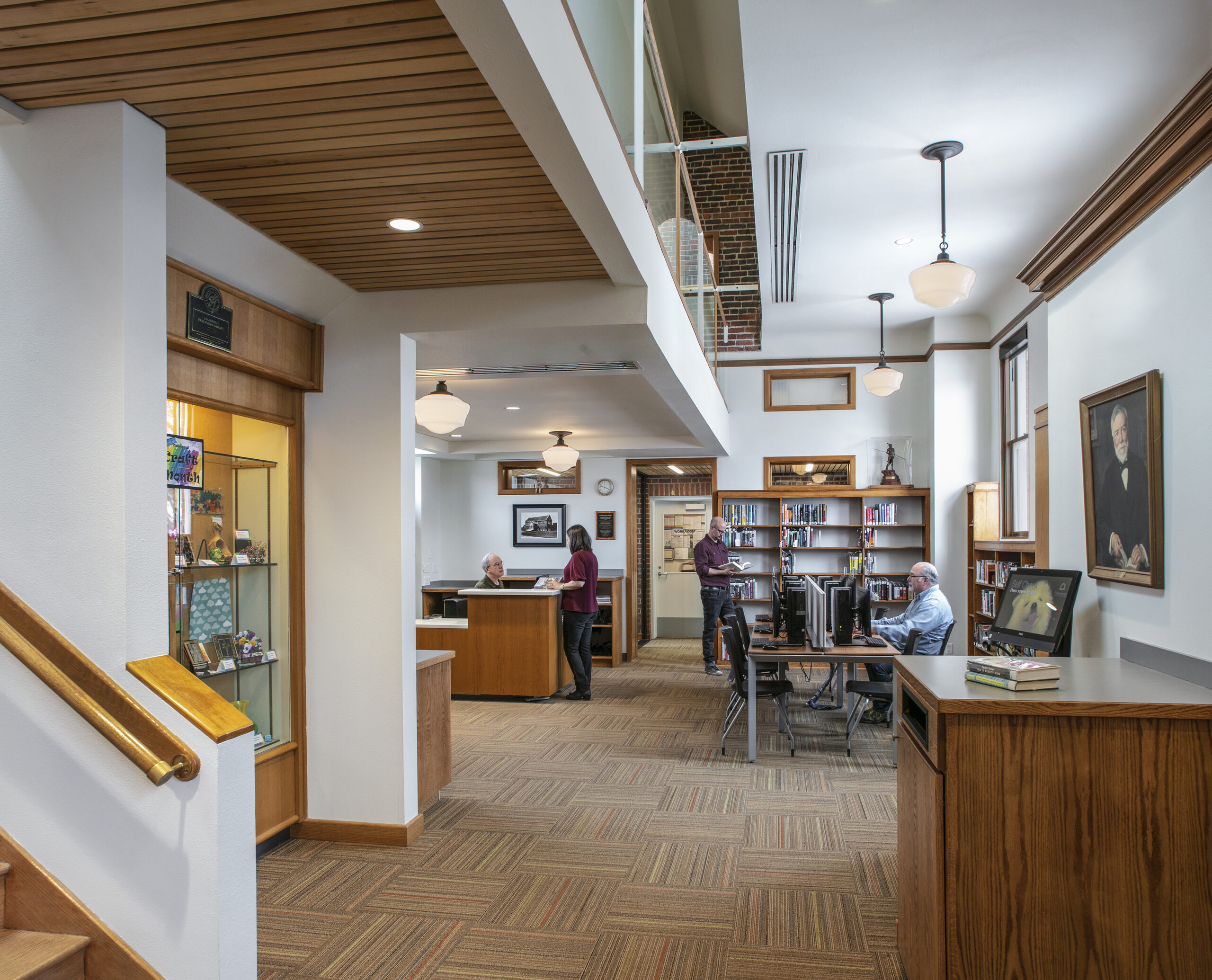
The Digital Impact on Physical Space
The migration of resources to digital formats has revolutionized library space allocation. Reference collections and periodicals, which once required substantial floor space, have largely moved online. This transition has created opportunities to repurpose space for community needs. However, this doesn’t mean physical collections have disappeared entirely. Public libraries, in particular, maintain robust browsable collections, especially in children’s sections, while academic libraries have adopted innovative solutions like off-site storage facilities for less-frequently accessed materials.
The Public-Academic Divide
While both public and academic libraries have embraced this evolution, their paths have diverged in important ways, reflecting their distinct missions and user bases:
Public Libraries:
Maintain larger browsable collections with emphasis on current materials and children’s literature
Create flexible community spaces that can accommodate everything from story time to job training
Design multi-generational spaces that serve diverse community needs
Integrate modern amenities like maker spaces, art galleries, and cafes
Focus on providing equitable access to digital resources and technology
Academic Libraries:
Utilize efficient off-site storage solutions for less-accessed materials
Prioritize collaborative learning environments that support modern pedagogical approaches
Create specialized research spaces and digital scholarship centers
Integrate advanced digital learning technologies
Design spaces that support extended study sessions and research work
The challenge for designers and administrators lies in determining the right balance for their specific community. Successful projects carefully analyze local needs and usage patterns to inform space allocation decisions between traditional collections and new community functions.
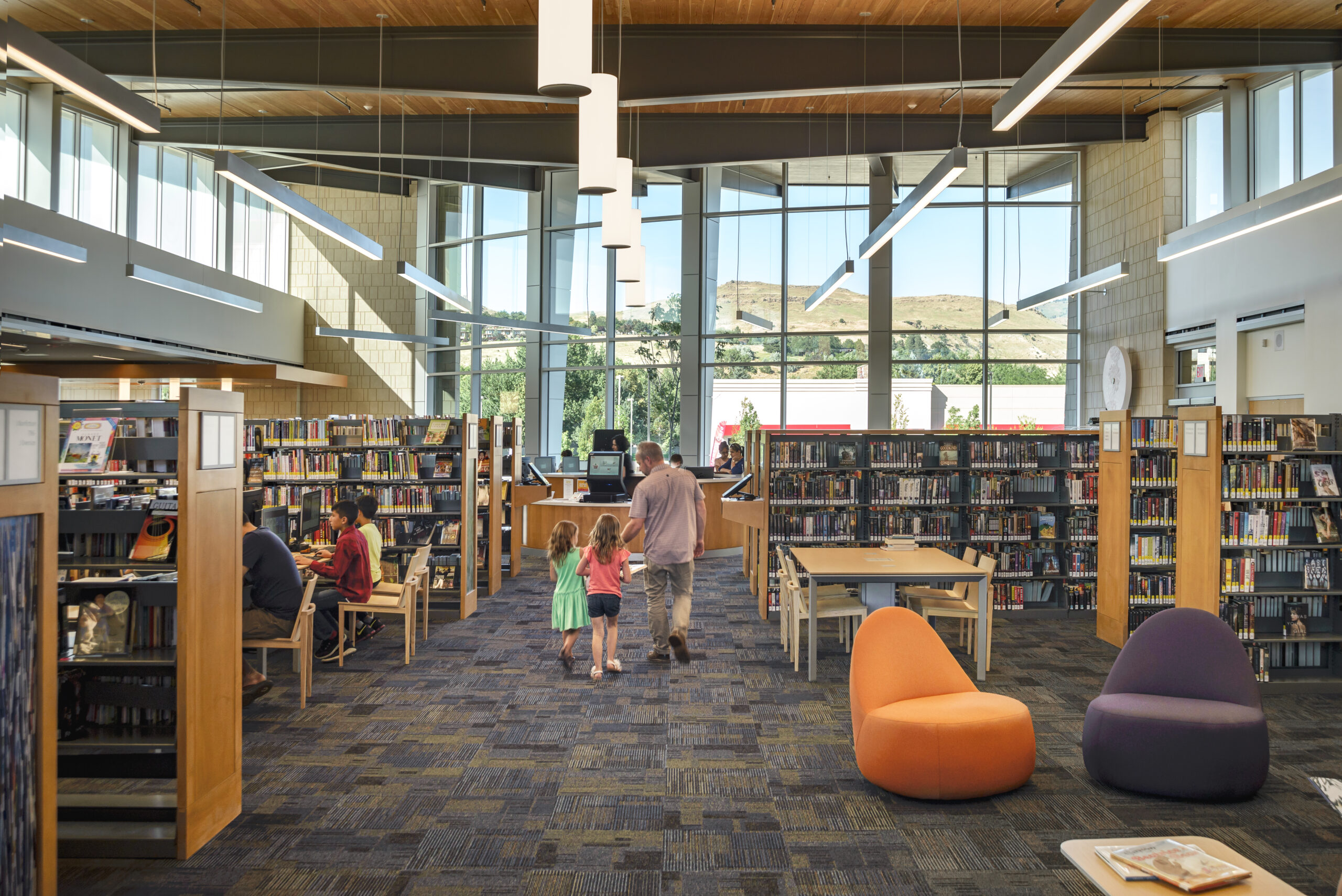
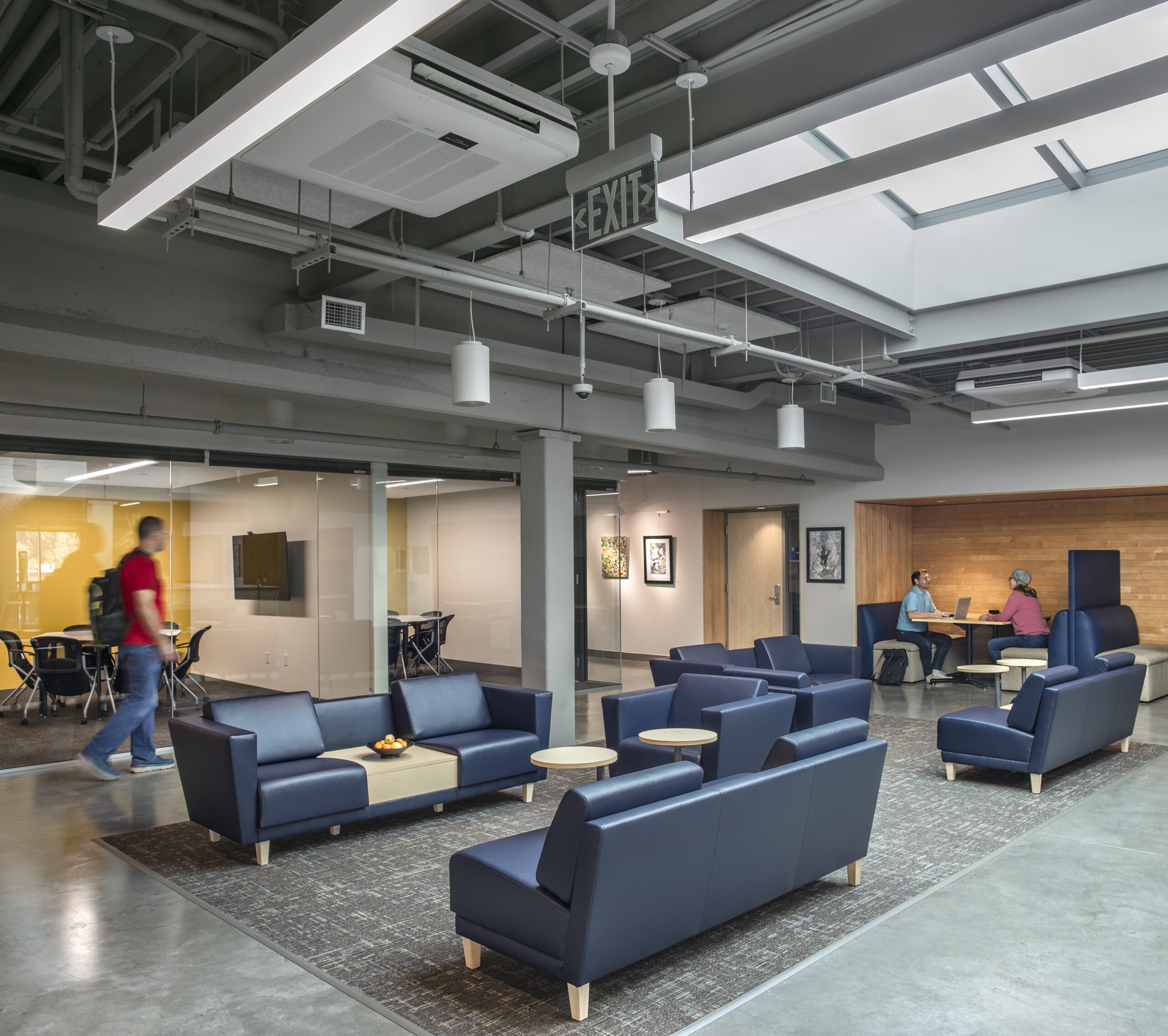
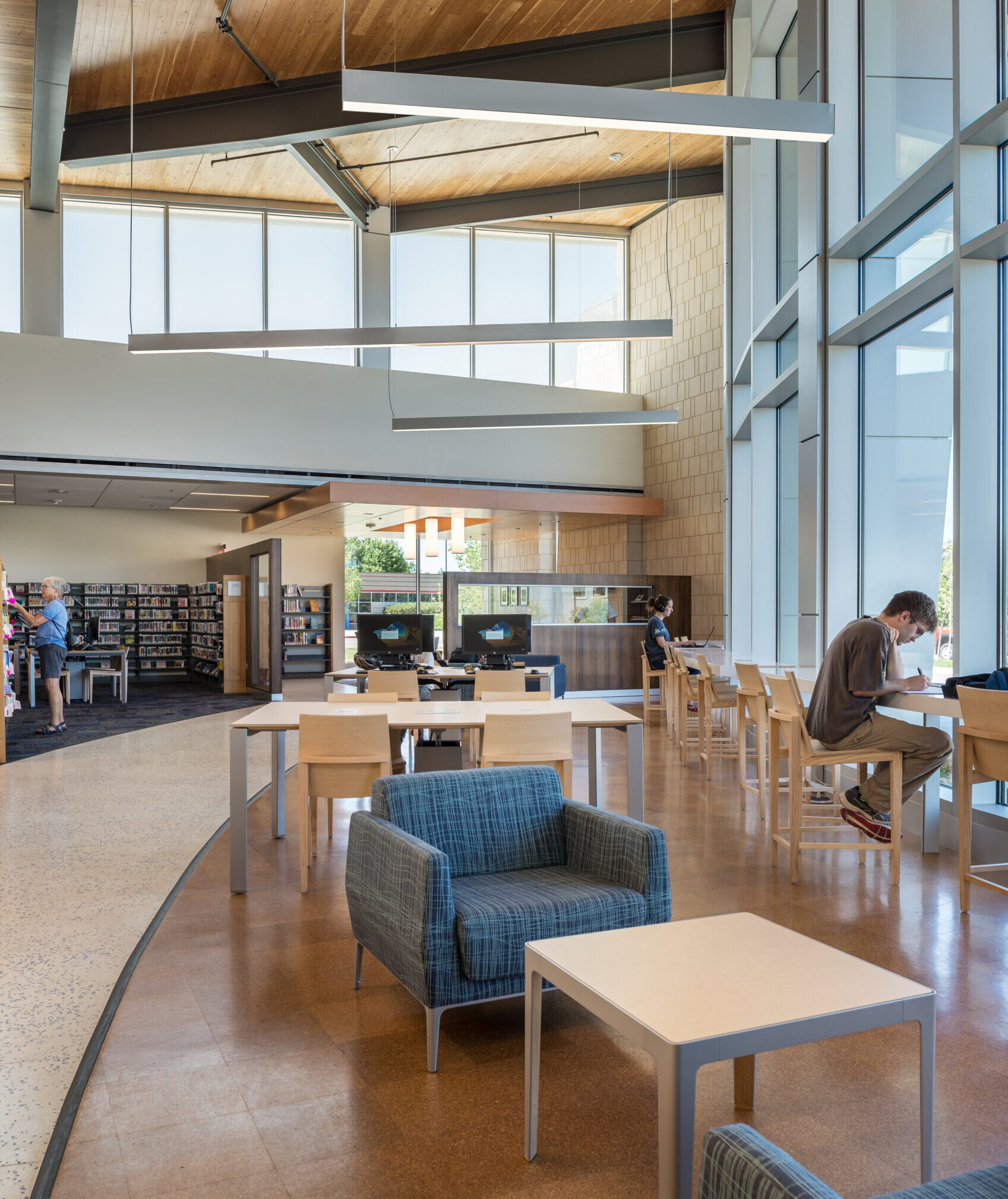
Designing for Modern Needs
The key to successful modern library design lies in creating flexible spaces that serve multiple purposes while remaining adaptable to future needs. Essential design elements include:
Open, column-free spaces that can be reconfigured as needs change
Technology-ready furniture that accommodates various devices while maintaining a timeless aesthetic
Modular meeting spaces that can expand or contract through movable walls and flexible furnishings
Excellent ambient lighting, combining natural light with sophisticated artificial systems
Mobile shelving systems that allow for space transformation without major renovation
The Equity Imperative
Perhaps most importantly, modern libraries must serve as equalizers in our communities. Design decisions now consider how spaces can support digital equity through device lending programs, accessible technology stations, and comfortable spaces for extended use. This commitment to equity echoes the century-old library motto of “free to all” in a digital context.
Successful designs incorporate charging stations, adequate power access, and spaces that support users who may rely on the library as their primary source of internet access. These considerations must be integrated seamlessly into the design, creating welcoming spaces that serve all community members with dignity.
Looking Forward
As we design libraries for the future, the focus must remain on creating spaces that serve people first and foremost. While technology continues to evolve, the library’s role as a community anchor remains constant. The most successful designs will continue to balance traditional library services with new forms of community engagement, creating spaces that are both welcoming and adaptable to change.
The libraries that will thrive in the coming decades embrace this evolution while maintaining their core mission of public service and community support. Through thoughtful design that prioritizes flexibility, equity, and community needs, libraries can continue to serve as vital centers of learning, collaboration, and community engagement.
